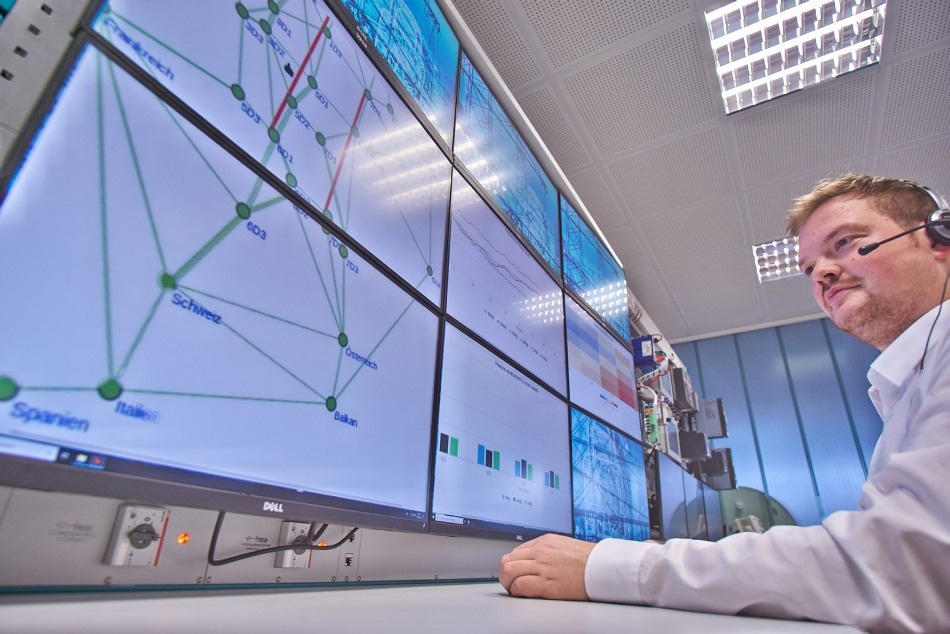Apr 2 2019
The grid is transforming as the major, centralized providers of the past are substituted by smaller, distributed suppliers. Maintaining such complex networks in stable working condition requires high-resolution sensor technology – artificial intelligence (AI) offers a way to form correct predictions and automatically sense any disturbances or irregularities in real time. Here is how Fraunhofer scientists formulated the compression methods, algorithms, and neural networks to make a power supply applicable for the future.
 Andre Kummerow, a researcher at the Advanced System Technology (AST) branch of Fraunhofer IOSB, working on an algorithm. (© Fraunhofer IOSB-AST/Martin Käßler)
Andre Kummerow, a researcher at the Advanced System Technology (AST) branch of Fraunhofer IOSB, working on an algorithm. (© Fraunhofer IOSB-AST/Martin Käßler)
The way power is produced is in transition: Earlier, all power was generated from big power plants, whereas these days it is produced from a variety of distributed sources as well, including photovoltaic systems, wind turbines, and other similar facilities. This change has a huge impact on the grid–with specific challenges for operators of transmission grids. How to track the correct functioning of grid factors such as phase angle and frequencies? Might there be inconsistencies or irregularities in the right functioning of the grid? Or are there lines or power plants down? Present-day basic measurement technology is no longer able to dependably supply answers to these kinds of questions. Increasingly operators are, thus, looking at additional phasor measurement units (PMUs) and other digital solutions. These systems measure the amplitude and phase of voltage and current up to 50 times a second. This process produces massive volumes of data, easily numerous gigabytes daily.
Data compression saves 80% of data
In response, scientists at the Advanced System Technology (AST) branch of the Fraunhofer Institute for Optronics, System Technologies and Image Exploitation IOSB in Ilmenau are seeking ways to enhance the data processing using AI, with a view to enhancing grid reliability and demonstrating a power supply system that is applicable for the future.
We can use AI to automatically log, compress and process up to 4.3 million data sets per day.
Peter Bretschneider, Professor and Head of Energy Department, AST branch, Fraunhofer IOSB.
In the initial phase of their research, the team has put together a compression method that saves 80% of the data. Not only is it stress-free to store the data, but also quicker and more efficient to process it.
Automated data processing in real time
In the following phase, the team went on to use the phasor measurement data they had gotten to apply neural networks – one of the main components for present-day AI. More precisely, they “fed” the neural networks with instances of common system outages. This way, the algorithms progressively learn to distinguish – and exactly categorize – regular operating data from distinct system faults. Following the training phase, the scientists applied the neural networks to current data produced from phasor measurements – data that formerly had to be taken and manually processed. This is the point the algorithm made its first jump into real-time application, making split-second choices on where there is an anomaly or error, as well as the location and type of that disturbance. To take an instance, if one power plant should falter, an unexpected spike can be anticipated in the load put on the other power plants. The added load slows down the generators, and the frequency drops. This requires rapid countermeasures because if the frequency drops below a threshold value, the operator may be forced to take off sections of the grid for the sake of system steadiness. Besides, these rapid measures mean in about less than 500 milliseconds. Since the algorithm can reach a decision within 20–50 milliseconds, which leaves adequate time to execute appropriate 100% automated countermeasures.
The algorithm is ready to be executed, as the scientists continue to reform the control and regulation of the applicable countermeasures. The development is of interest not only to the major operators of power transmission grids, but also to local distribution grids.
To make an analogy with the road network, what’s the point of having clear motorways when the smaller regional roads are permanently blocked?
Peter Bretschneider, Professor and Head of Energy Department, AST branch, Fraunhofer IOSB.
Power to predict problems of the future
Nevertheless, the scientists are not limiting themselves to the present-day problems, but also want to factor in irregularities that have not even happened thus far. “If we continue to pursue renewables, it may lead to situations we don’t even know about yet,” says Bretschneider. Here, too, the scientists have sought the help of AI, where they work on classifying these kinds of unidentified phenomena and developing suitable algorithms using digital network maps.